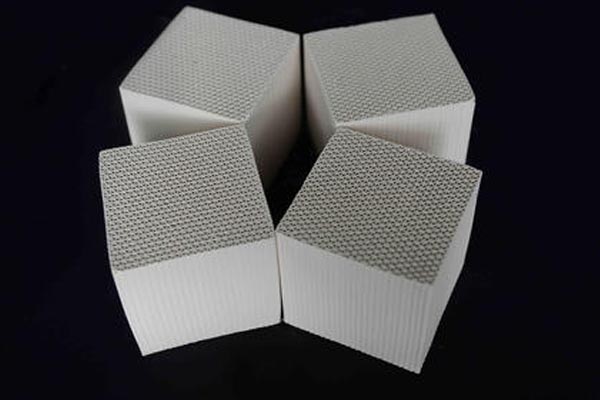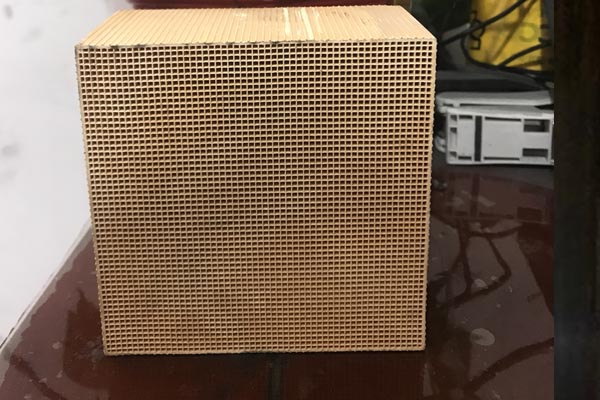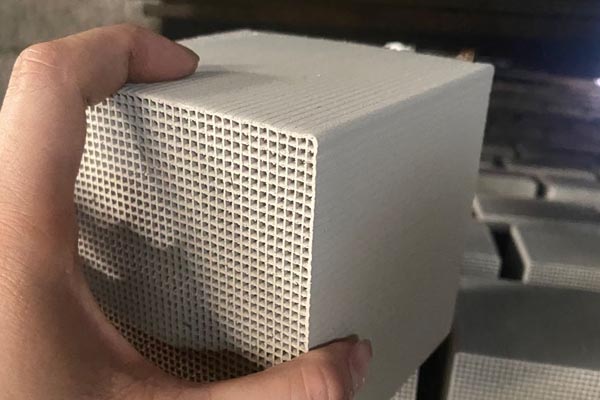
Beijing Zeolite is a porous aluminosilicate crystal (a1uminsi1ict) with a water bearing frame structure, which exists naturally in nature and is also artificially synthesized. The ideal chemical formula of zeolite can be expressed as Mx/yA1XSiyO2 (x y) P? H2O, In the formula, M refers to alkali metals (such as Na, K, Li) and alkaline earth metals (such as Ca, Mg, Ba, Sr). The chemical composition of zeolite is generally considered to be composed of A12O3, SiO2, H2O and metal cations, of which A12O3 and SiO2 account for about 80% of the total amount of zeolite minerals. In different zeolite minerals, the proportion of silicon and aluminum is different, Direct selling And the different proportion of zeolite will cause some changes in zeolite characteristics, such as ion exchange and acid resistance. Because the silicon (aluminum) oxygen tetrahedron of natural zeolite crystal has many holes and channels, which occupy cations and water molecules. When some other goods are completely dehydrated after baking, the crystal skeleton is not damaged, but forms large holes on the inner surface, which can absorb and store a large number of molecules, so it has the characteristics of large adsorption capacity and high selectivity.

Molecular sieve is a crystalline silicate or aluminosilicate, which is a pore and cavity system with molecular size (usually 0.3nm to 2.0nm) formed by connecting silicon oxygen tetrahedron or aluminum oxide tetrahedron through oxygen bridge bond, Beijing Therefore, it has the characteristics of screening molecules. However, with the deepening of molecular sieve synthesis and application research, researchers have found phosphoaluminate molecular sieves, and the skeleton elements (silicon or aluminum or phosphorus) of molecular sieves can also be replaced by B, Ga, Fe, Cr, Ge, Ti, V, Mn, Co, Zn, Be and Cu, and the size of its pores and cavities can also reach more than 2 nm, major Therefore, molecular sieves can be divided into silicon aluminum molecular sieves, phosphorus aluminum molecular sieves and skeleton heteroatom molecular sieves according to the composition of skeleton elements;

The main components of zeolite are: silicon and aluminum, which have adsorption capacity and can be used as adsorbent; Zeolite runner is to use the specific pore size of zeolite to have the ability of adsorption and desorption for organic pollutants, so that VOCs waste gas with low concentration and large air volume can be concentrated and converted into low air volume and high concentration gas by the zeolite runner, which can reduce the operating cost of the back-end final treatment equipment. Beijing The characteristics of the device are suitable for treating waste gas with large flow, low concentration and various organic components. The disadvantage is high initial investment. The zeolite wheel adsorption purification device is a gas purification device that can continuously perform adsorption and desorption operations. The two sides of the zeolite runner are divided into three areas by special sealing devices: adsorption area, desorption (regeneration) area and cooling area. major The working process of the system is as follows: the zeolite runner rotates continuously at a low speed and circulates through the adsorption area, desorption (regeneration) area and cooling area; When the exhaust gas with low concentration and large air volume continuously passes through the adsorption area of the runner, VOCs in the exhaust gas are adsorbed by the zeolite of the runner, and the gas purified by adsorption is directly discharged; The organic solvent adsorbed by the wheel is sent to the desorption (regeneration) area with the rotation of the runner, and then the small amount of hot air continuously passes through the desorption area. The VOCs adsorbed on the runner are thermally desorbed in the desorption area to achieve regeneration, and the VOCs waste gas is discharged together with the hot air; After the runner is transferred to the cooling area for cooling, the adsorption can be carried out again. With the continuous rotation of the runner, the adsorption, desorption and cooling cycles are carried out to ensure the continuous and stable operation of waste gas treatment.

Direct selling Microporous molecular sieves with molecular apertures below 2 nm, mesoporous molecular sieves with molecular apertures above 50 nm (macroporous molecular sieves with molecular apertures above 50 nm), mesoporous molecular sieves have high specific surface area, regular and orderly pore structure, narrow pore size distribution, continuous and adjustable pore size and other characteristics, which make it difficult to complete the adsorption and separation of macromolecules in many microporous molecular sieves, And catalytic reaction. Therefore, molecular sieve materials with different properties and pore sizes shall be configured according to the different components of organic waste gas during selection, so as to achieve targeted organic waste gas treatment, meet the design requirements and emission standards. The main material of honeycomb zeolite adsorbent is natural zeolite. The manufacturer of zeolite is composed of silica Inorganic microporous material composed of al_2o_3 and alkaline metal or alkaline earth metal, with inner pore volume accounting for 40-50% of the total volume and specific surface area of 100-500 m2/g, is characterized by high temperature resistance, non flammability, good thermal stability and hydrothermal stability. It is an efficient molecular sieve carrier with good adsorption performance, no secondary pollution, and can be regenerated at high temperature. Compared with honeycomb activated carbon, its performance is about 25% of its efficiency, However, it is widely used in the fields of adsorption, separation, catalysis and environment due to its high temperature resistance and difficult ignition, major It is more suitable for the treatment of organic waste gas with large air volume and low concentration.



